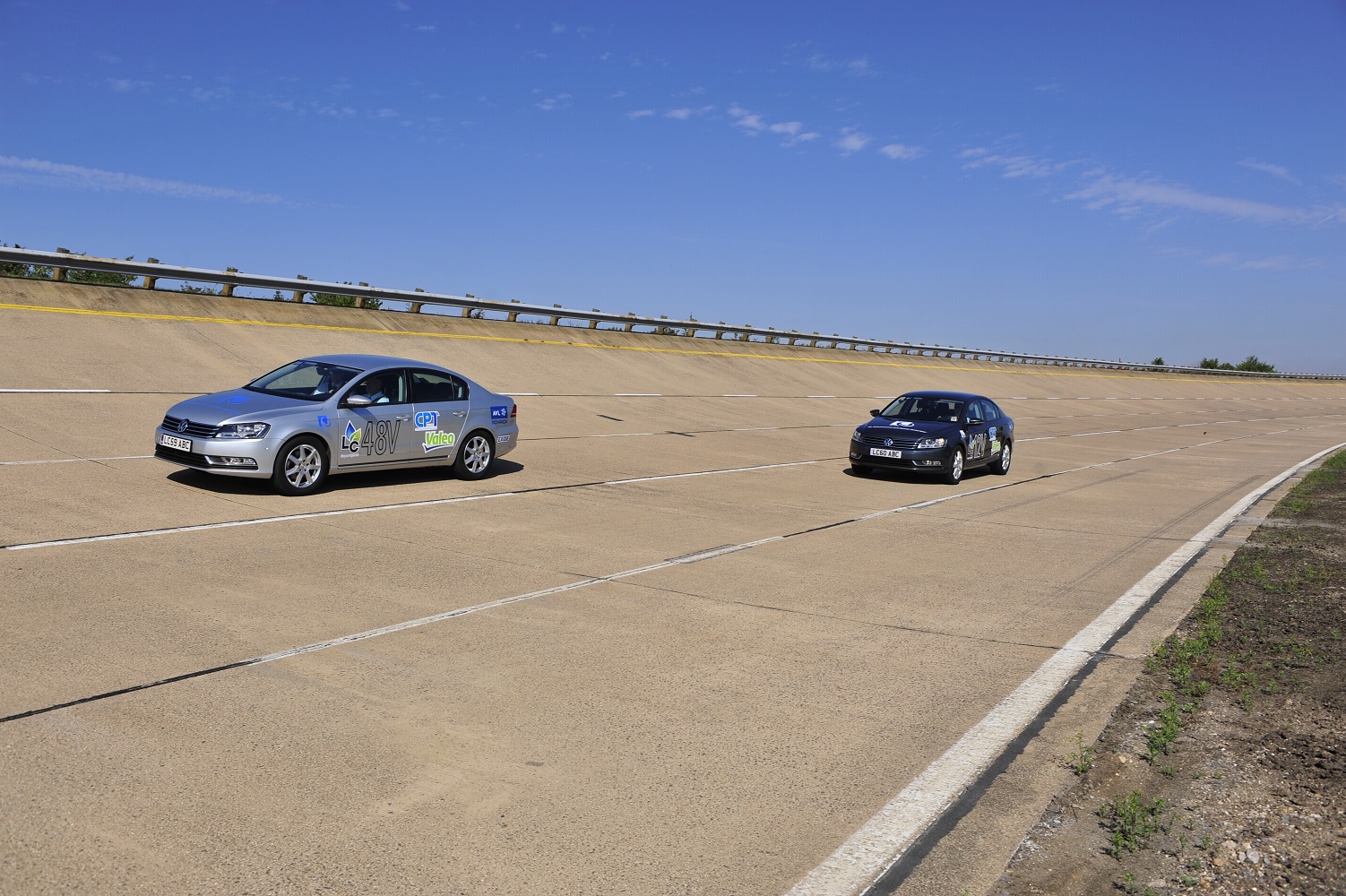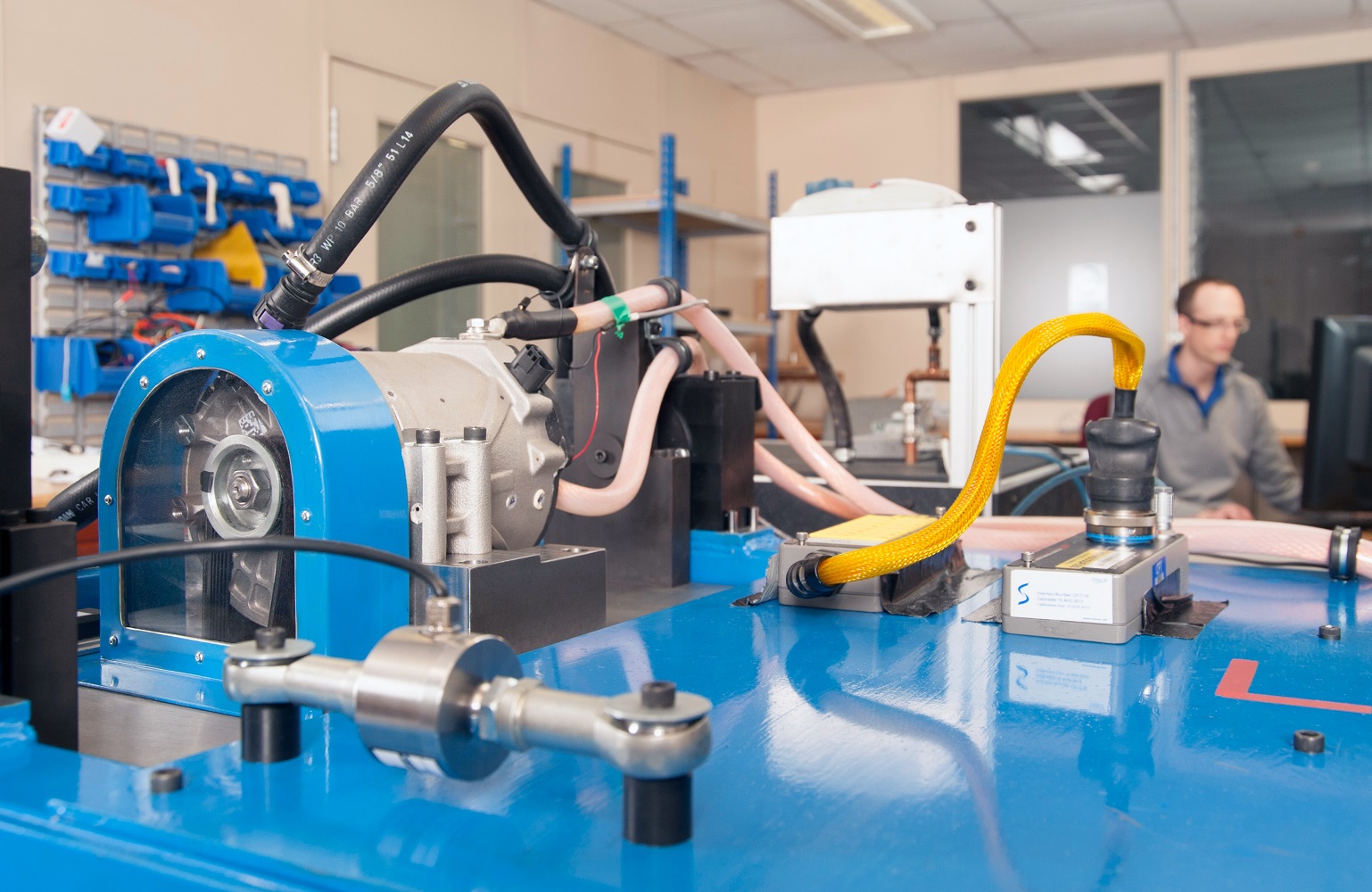Controlled Power Technologies (CPT) will deliver two technical papers at the 80th anniversary of the SAE World Congress being held at the Cobo Center in Detroit on 8-10 April 2014. The first presentation describes its SpeedStart® torque assist and kinetic energy recovery system; the second its turbine integrated gas energy recovery system known as TIGERS®. Both systems are based on switched reluctance (SR) motor-generator technology developed for a new breed of 48V mild hybrid vehicles and are at a high level of automotive application readiness.
“Sixty volts is defined by the United Nations Economic Commission for Europe (UNECE) regulation R100 as the boundary between low and high voltage in a direct current circuit, and so is a critical point where a step change in system cost can be identified,” says CPT’s chief executive Nick Pascoe. “Further standards such as LV-148 as defined by the Verband der Automobilindustrie (VDA) are providing further structure to the 48V nominal voltage approach, which allows high power energy recuperation without exceeding 60V.”
SpeedStart
CPT’s SpeedStart paper describes the specification of a 48V belt integrated starter generator (B-ISG) developed to meet the market demand for low voltage mild hybrid passenger vehicle applications. The main areas discussed are the vehicle and application variations, considered both in terms of electrical and mechanical architecture and how these transfer into the motor design. The paper focuses in particular on the challenges of balancing the need to customise the motor for different applications against the need to maintain common variants to minimise cost, reduce risk and accelerate development cycles.
“The number of architectures under consideration for 48V systems is still growing, particularly across different vehicle classes,” says Peter Scanes senior manager for SpeedStart who co-authored the SpeedStart report with lead applications engineer John Kelly and senior engineer for powertrain systems implementation Paul Bloore. “This results in a range of system level requirements from different manufacturers, dictated by vehicle targets and other issues such as battery state-of-charge and energy storage capability.”
“By maintaining a common core of rotor and stator laminations and a common coolant system, it is possible to accelerate the development of each application. This common core also provides greater confidence in the robustness of prototypes, while minimising the cost of variants further supports the development of 48V systems. SR machines are ideally suited to this concept of low cost development, while reducing the cost of production components. Moreover, compared with other electrical machines, they have a high efficiency across a large speed range, good controllability, and reliability.”
“For SpeedStart, we’ve established the critical design rules covering for example the optimum packaging and overall geometry of a 12.5 kW belt-integrated starter generator,” says Scanes. “The commonality of machine variants allows relatively easy variation of performance for different applications including trade-offs between peak torque, peak power, steady state power and other requirements from the electrical and mechanical systems. Sophisticated modelling of the control and power electronics in addition to the electromagnetics of the motor are essential to this capability and means our control strategy can allow each machine to operate closer to the real motor limits seen in varied automotive duty cycles.”
TIGERS
CPT’s technical paper describing its turbo-generator integrated gas energy recovery system known as TIGERS is similarly focused on the simulation, machine design, control system development and validation of the technology. The unit can be applied to naturally-aspirated or forced induction engines – though most likely will be applied to downsized turbocharged engines as an additional unit to the existing turbocharger.
“Although combustion engine turbochargers are now commonplace, replacing a compressor with an electrical generator to create a separate thermal energy recovery system, offers a set of unique design challenges – particularly given that the exhaust of a conventional road vehicle is a highly transient environment with regards to mass flow and temperature,” says Andy Dickinson senior manager responsible for CPT TIGERS/COBRA technology.
“In spark ignition applications the exhaust gas can reach temperatures greater than 900°C. Considering that the switched reluctance machine at the heart of the TIGERS technology is expected to harvest energy from the exhaust gas, it is essential that it not only survives in this extreme environment, but also produces work without ruining vehicle performance or fuel efficiency. To ensure that the bearing system, generator core and integrated electronics are all kept within their working ranges, the coolant system taps into the engine coolant to operate between 80 and 105°C.”
“The concept of direct turbo generation, using a turbine coupled to an electrical generator to extract the potential and kinetic energy of the fast flowing exhaust gas, differs significantly from these waste-heat recovery devices, which rely solely on heat transfer to extract energy. With a correctly specified turbine, there is the potential to harvest significant electrical energy over a large proportion of the engine operating range as the turbo-generator can take advantage of both temperature and mass flow rate of the exhaust gas provided by the engine.”
As with the SpeedStart device, the liquid cooled switched reluctance generator at the core of the TIGERS technology provides some benefits over conventional permanent magnet generators. Due to the absence of rotor windings, SR machines possess low rotating inertias thus minimising rotor losses. In addition, due to the exclusion of permanent magnets there is no risk of torque loss due to de-magnetisation or uncontrolled generating modes at high-speed. The SR type generator also facilitates cost savings across the design, including minimal tooling investment due to the straightforward motor construction and a reduction in the rating of the power electronics due to low switching frequencies. The 65,000rpm high speed capability of the Tigers electrical generator also facilitates a direct coupling to the turbine rather than a reduction gear set.
Commenting on its focus on 48V mild hybrid technology, energy management and recovery systems CPT chief executive Nick Pascoe says: “There is a continual drive within the auto industry for low carbon vehicle technologies. The new 48V DC standard provides the opportunity for a cost effective approach based on switched reluctance motor generator technology with integrated power electronics and control software. SR technology not only eliminates the need for permanent magnets made from increasingly difficult to obtain rare earth materials, but also is uniquely well suited for electrical boosting and energy recovery in downsized petrol and diesel engines. Our various applications of low voltage switched reluctance motor-generator technology are now approaching the level of readiness required by carmakers to meet near-term European CO2 emission levels – reducing further to an indicative 68-78 g/km by 2025.”
Source: CPT
Romain’s opinion:
Theoretically, 48V systems look mature and ready for market introduction. However, none of the car makers has made the step and put this system onto its products. I think it is mainly due to its high cost. I think that as long as authorities don’t push for more stringent CO2 emissions limits, OEMs will not embed this technology. Do you think that 48V will be used to reach 2020 CO2 emissions legislation?




















